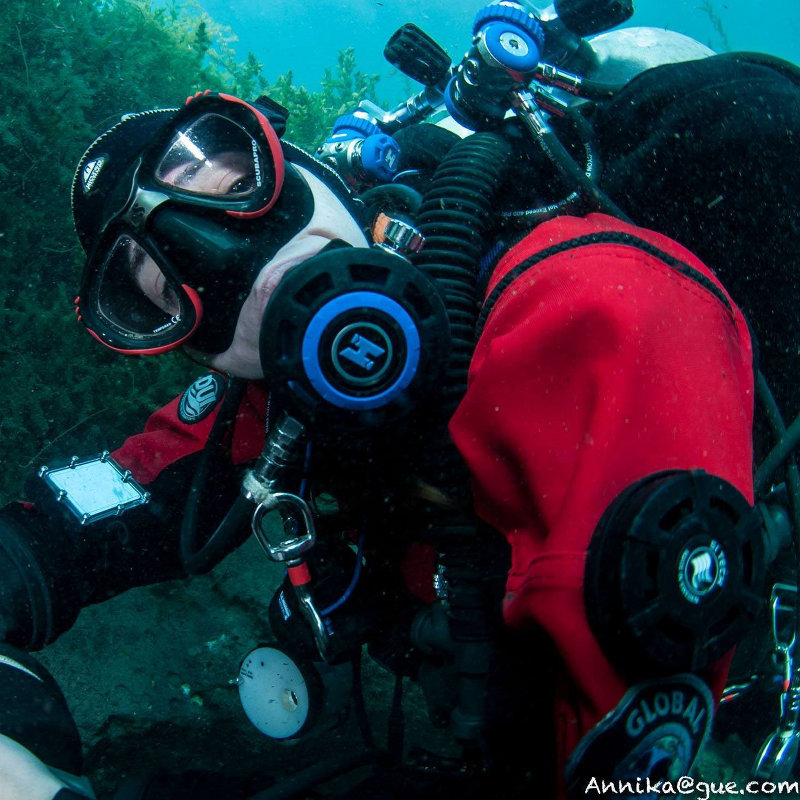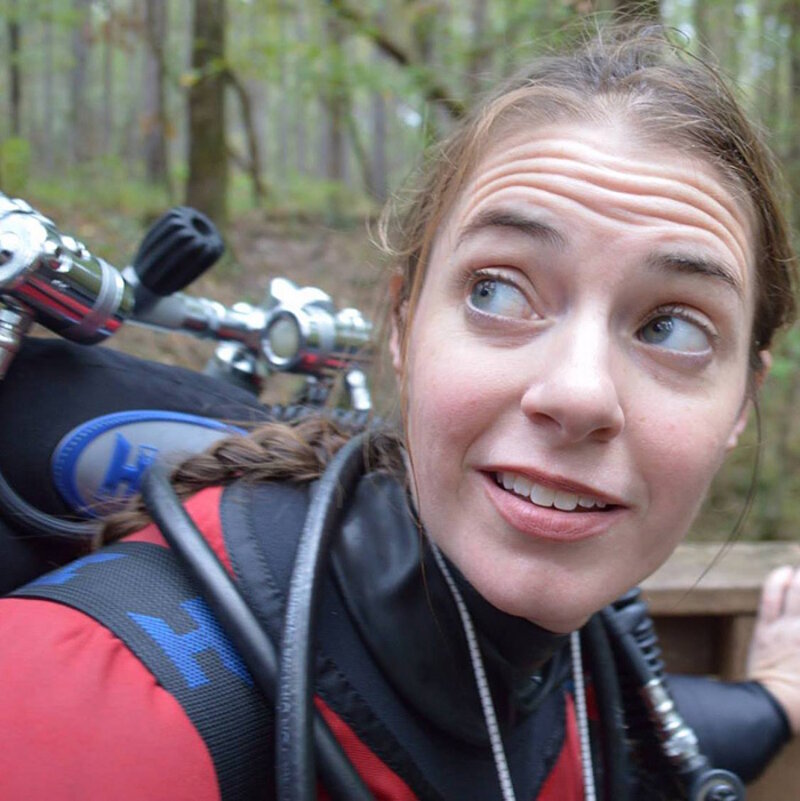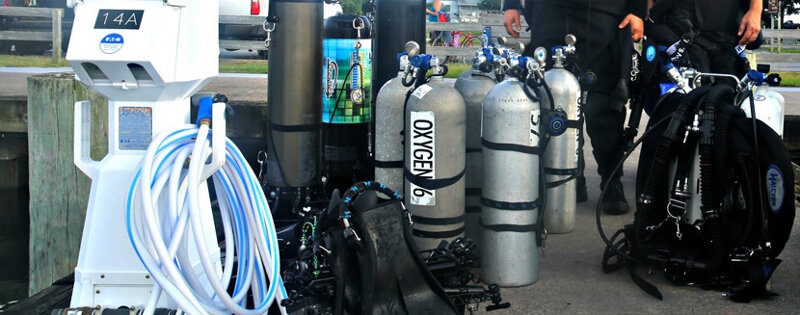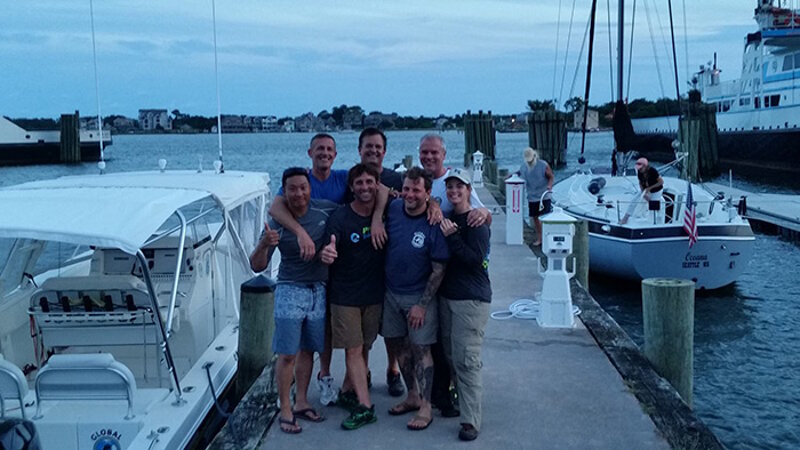
By Meredith Tanguay - Global Underwater Explorers Dive Team
September 3, 2016
As a Dive Safety Officer (DSO) for the Global Underwater Explorers (GUE) Dive Team aboard R/V Baseline Explorer, my role is to manage logistics for our six-person dive team. This includes filling tanks, preparing and maintaining equipment, driving our dive tender boat, operating our hyperbaric chamber, as well as pre- and post-mission coordination under the direction of our Dive Team Leader and Science Coordinator, Todd Kincaid.

Meredith Tanguay diving. Image courtesy of Meredith Tanguay. Download larger version (jpg, 386 KB).
We have multiple Dive Safety Officers and at least one DSO is aboard for each mission. Our dive team is self-supporting, meaning each member of the team, including the DSO, is a diver and the entire team alternates diving and supporting from the surface. Our GUE Dive Team members are volunteers and join from all over the world to support the Project Baseline initiative.

Meredith Tanguay in dive gear. Image courtesy of Meredith Tanguay. Download larger version (jpg, 190 KB).
The standardized nature of GUE divers allows us to “shake hands and go diving” with all our pre-mission planning focused on the specific tasks and objectives of the mission – the easy part is the diving!
On this expedition, we have divers from the USA, Sweden, South Korea, the Netherlands, and Russia, with specialists in hydrology and other sciences, archaeology, underwater photography, filmmaking, and underwater 3D modeling, all working together to affect the mission. The Dive Team is using Closed Circuit Rebreathers (CCRs) and fast underwater scooters to accomplish our mission. These tools are chosen for a combination of their logistic efficiencies and operational flexibility. The scooters allow each diver to be extremely maneuverable and to negotiate currents. CCRs are devices that recycle each breath that otherwise, in traditional SCUBA units, is vented as bubbles. Rebreathers recycle exhaled gas by removing carbon dioxide and adding back in the right amount of oxygen. This allows a diver a longer bottom time with a minimal amount of equipment.

Diving team's dive gear. Photo courtesy of Project Baseline. Download larger version (jpg, 464 KB).
We also carry traditional SCUBA equipment as back-up; but, in our normal operations, these back-ups are not used, simplifying our re-filling logistics and allowing us to operate away from our mothership for more time.
Since the rebreather is mixing gas on the fly, we can prepare our gas selection and equipment for our deepest target, in this case 125 meters, yet maintain the flexibility to change sites and depths as conditions or priorities shift, as they did this week.
Usually the GUE Dive Team operates in concert with a mothership; however, the series of tropical systems did not present us with a long enough window for R/V Baseline Explorer to transit from the safe harbor to where our subject, the Battle of the Atlantic wreck sites, are located. Thankfully, our 13 meter dive tender has the capabilities and speed to allow us to operate independently, maximizing any weather windows.

Dive team photo. Photo courtesy of Project Baseline. Download larger version (jpg, 393 KB).
It was my duty to prepare and re-locate our gear over 100 miles from R/V Baseline Explorer to Ocracoke Island, North Carolina, where our dive tender was based. Since we could operate independently, the GUE Dive Team was able to get in two days of diving on the YP-389 wreck between Tropical Depression Eight and the mandatory visitor evacuation order ahead of Storm Hermine.
Being a volunteer Dive Safety Officer means a lot of long hours and weeks away from home, but it is all worth it to be a part of a great team. Some days I dive to document new species while other days I support “putting someone on the moon” – delivering divers to a never-before-seen wreck like the YP-389. Together we share in the joy of new discoveries unlocked from the depths of our seas.